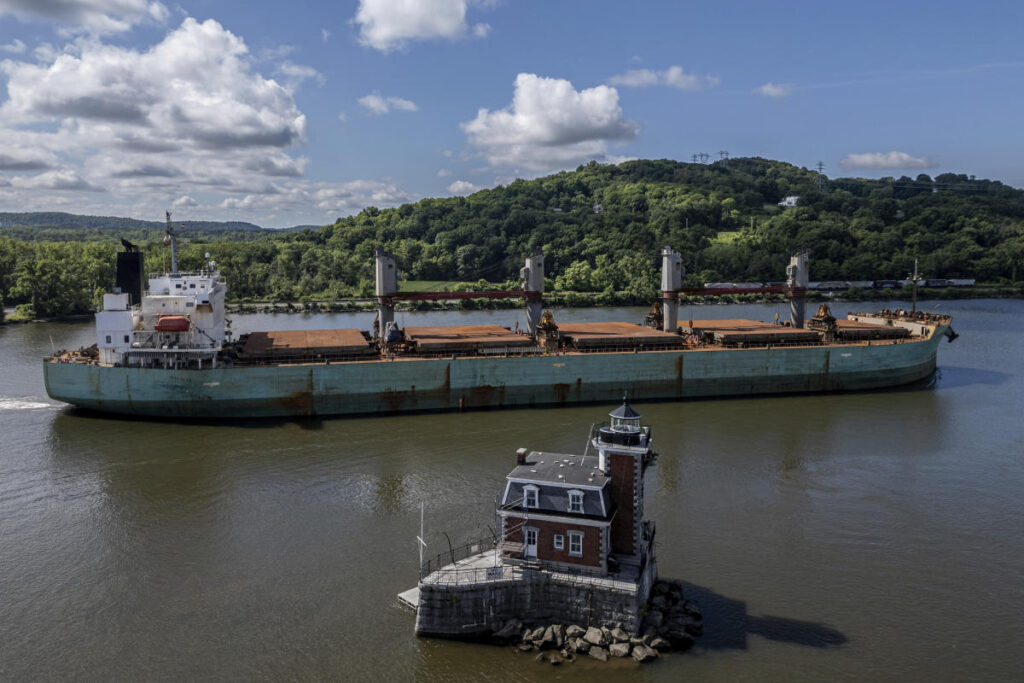The Hudson-Athens Lighthouse, a historical structure operating since 1874, is undergoing preservation efforts due to its deteriorating condition. Located in the Hudson River in New York, this lighthouse has been a crucial navigational aid, preventing boats from running aground on mud flats between the towns of Athens and Hudson. Recently, $50,000 has been allocated by U.S. Senator Chuck Schumer and the Army Corps of Engineers to study methods for safeguarding this 150-year-old landmark, which has importantly been added to the National Trust for Historic Preservation’s list of the 11 most endangered historic places in the United States. The lighthouse, described by Schumer as equivalent in significance to the Statue of Liberty for the region, stands as a testament not only to maritime navigation but also to the rich history of the Hudson River and the evolution of American infrastructure.
Preliminary studies highlighted concerns regarding the lighthouse’s structural integrity due to ongoing erosion. Erosion is exacerbated by the turbulence generated when commercial vessels pass, which is displacing mud supporting the wooden pilings and exposing them to the river’s waters. Schumer expressed optimism about securing the necessary funds for the lighthouse’s restoration, noting that the preservation effort is a priority that requires significant financial investment for both immediate and long-term stabilization. The funding will initiate discussions between the army engineers and the Hudson-Athens Lighthouse Preservation Society, which oversees the lighthouse as a museum and tourist destination.
The lighthouse is currently maintained with an automated LED beacon, but its historical construction relies on around 200 wood pilings. These pilings, embedded in mud, are now deteriorating at an accelerated pace due to constant exposure from erosion. The preservation society has put forward plans to both reinforce the lighthouse’s foundation and enhance public accessibility to the site. To protect it from future erosion, the society proposes creating a ring of corrugated steel around the lighthouse, which would act as a barrier against the river’s turbulence. Such physical improvements are deemed essential not only for safety but also for increasing community engagement and visitor traffic.
The fate of the Hudson-Athens Lighthouse highlights a broader trend regarding historic lighthouses in the United States, a category that has been shrinking over the years. At the beginning of the 20th century, there were approximately 1,500 lighthouses, yet that number has dwindled to around 800 today, according to the U.S. Lighthouse Society. This decline underscores the precarious position many lighthouses find themselves in as they face aging infrastructure, changing environmental conditions, and varying levels of financial support. The current case of the Hudson-Athens Lighthouse serves not only as a reminder of the challenges facing historic structures but also as a rallying point for historical preservation efforts nationwide.
Senator Schumer emphasized the importance of the lighthouse to both local heritage and the greater narrative of American history. By undertaking preservation initiatives, communities can preserve pivotal landmarks that educate and engage the public about their local history. The efforts surrounding the Hudson-Athens Lighthouse are emblematic of a growing recognition of the value of safeguarding cultural monuments. These structures serve as educators, reflect the maritime heritage of their regions, and offer insights into the technological advancements that have shaped navigation throughout history.
In conclusion, the initiative to preserve the Hudson-Athens Lighthouse represents a critical step toward ensuring that this piece of history is not lost to the ravages of time and environmental change. The combined efforts of governmental support, local preservation societies, and community engagement could lead to the revitalization of this landmark, ensuring it remains a beacon of history and local pride for future generations. Through these actions, stakeholders reaffirm their commitment to preserving the integrity of historical sites, promoting heritage tourism, and bolstering community bonds by bringing the history of these structures to life for all who visit.

